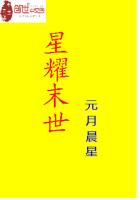Presently, however, complaints were heard of the wire tie.When the wheat was threshed, bits of wire got into the straw, and were swallowed by the cattle; or else the bits of metal got among the wheat itself and gave out sparks in grinding, setting some mills on fire.Two inventors, almost simultaneously, produced the remedy.Marquis L.Gorham, working for McCormick, and John F.
Appleby, whose invention was purchased by William Deering, one of McCormick's chief competitors, invented binders which used twine.
By 1880 the self-binding harvester was complete.No distinctive improvement has been made since, except to add strength and simplification.The machine now needed the services of only two men, one to drive and the other to shock the bundles, and could reap twenty acres or more a day, tie the grain into bundles of uniform size, and dump them in piles of five ready to be shocked.
Grain must be separated from the straw and chaff.The Biblical threshing floor, on which oxen or horses trampled out the grain, was still common in Washington's time, though it had been largely succeeded by the flail.In Great Britain several threshing machines were devised in the eighteenth century, but none was particularly successful.They were stationary, and it was necessary to bring the sheaves to them.The seventh patent issued by the United States, to Samuel Mulliken of Philadelphia, was for a threshing machine.The portable horse-power treadmill, invented in 1830 by Hiram A.and John A.Pitts of Winthrop, Maine, was presently coupled with a thresher, or "separator," and this outfit, with its men and horses, moving from farm to farm, soon became an autumn feature of every neighborhood.The treadmill was later on succeeded--by the traction engine, and the apparatus now in common use is an engine which draws the greatly improved threshing machine from farm to farm, and when the destination is reached, furnishes the power to drive the thresher.Many of these engines are adapted to the use of straw as fuel.
Another development was the combination harvester and thresher used on the larger farms of the West.This machine does not cut the wheat close to the ground, but the cutter-bar, over twenty-five feet in length, takes off the heads.The wheat is separated from the chaff and automatically weighed into sacks, which are dumped as fast as two expert sewers can work.The motive power is a traction engine or else twenty to thirty horses, and seventy-five acres a day can be reaped and threshed.
Often another tractor pulling a dozen wagons follows and the sacks are picked up and hauled to the granary or elevator.
Haying was once the hardest work on the farm, and in no crop has machinery been more efficient.The basic idea in the reaper, the cutter-bar, is the whole of the mower, and the machine developed with the reaper.Previously Jeremiah Bailey, of Chester County, Pennsylvania, had patented in 1822 a machine drawn by horses carrying a revolving wheel with six scythes, which was widely used.The inventions of Manning, Hussey, and McCormick made the mower practicable.Hazard Knowles, an employee of the Patent Office, invented the hinged cutter-bar, which could be lifted over an obstruction, but never patented the invention.William F.
Ketchum of Buffalo, New York, in 1844, patented the first machine intended to cut hay only, and dozens of others followed.The modern mowing machine was practically developed in the patent of Lewis Miller of Canton, Ohio, in 1858.Several times as many mowers as harvesters are sold, and for that matter, reapers without binding attachments are still manufactured.
Hayrakes and tedders seem to have developed almost of themselves.
Diligent research has failed to discover any reliable information on the invention of the hayrake, though a horserake was patented as early as 1818.Joab Center of Hudson, New York, patented a machine for turning and spreading hay in 1834.Mechanical hayloaders have greatly reduced the amount of human labor.The hay-press makes storage and transportation easier and cheaper.
There are binders which cut and bind corn.An addition shocks the corn and deposits it upon the ground.The shredder and husker removes the ears, husks them, and shreds shucks, stalks, and fodder.Power shellers separate grain and cobs more than a hundred times as rapidly as a pair of human hands could do.One student of agriculture has estimated that it would require the whole agricultural population of the United States one hundred days to shell the average corn crop by hand, but this is an exaggeration.















